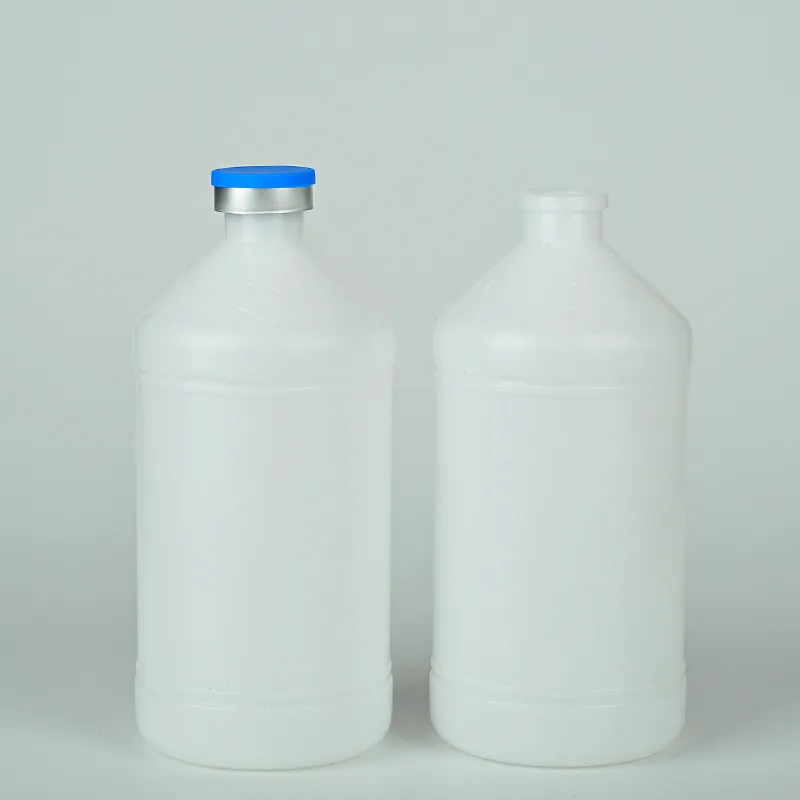hdpe blow
Understanding HDPE Blow Molding An In-Depth Look at its Applications and Benefits
High-Density Polyethylene (HDPE) is a versatile thermoplastic that has become a material of choice in a variety of manufacturing processes, particularly in blow molding. This method capitalizes on the unique properties of HDPE to produce lightweight, durable, and cost-effective products. In this article, we will delve into the HDPE blow molding process, its applications, and the advantages it offers to manufacturers and consumers alike.
The Blow Molding Process
Blow molding is a manufacturing process that is used to create hollow plastic parts by inflating a heated plastic tube, known as a parison, into the shape of a mold. The process can be divided into three main phases extrusion blow molding, injection blow molding, and stretch blow molding, each with its own unique applications and benefits.
1. Extrusion Blow Molding In this method, molten HDPE is extruded into a parison. The parison is then clamped between two mold halves, and air is blown into it, causing the plastic to expand and take the shape of the mold. This technique is ideal for producing large containers such as bottles, drums, and tanks.
2. Injection Blow Molding In this process, the parison is created by injection molding, which allows for greater precision and control over the final product. Once the preform is shaped, it is placed in a mold and air is injected to expand and form the container. Injection blow molding is particularly useful for manufacturing smaller, more intricate items like cosmetic bottles.
3. Stretch Blow Molding This specialized technique extends the parison to improve the strength and clarity of the final container. It is often used for producing PET bottles but can also be adapted for HDPE. The stretch blow molding technique contributes to the lightweight nature of the final product while enhancing its durability.
Applications of HDPE Blow Molding
HDPE blow molding is employed across a range of industries due to the material's favorable characteristics. Some common applications include
- Packaging HDPE is widely used for producing containers, bottles, and jugs due to its resistance to impact and chemicals. These properties make it suitable for packaging household products like detergents, cleaning agents, and shampoos.
- Industrial Containers The durability and resistance to corrosion of HDPE make it an ideal choice for larger industrial containers, including storage tanks and shipping drums. These containers often need to withstand harsh chemicals, and HDPE provides the necessary protection.
hdpe blow

- Automotive Components In the automotive industry, HDPE is used for various applications, such as fuel tanks and other structural components. The lightweight nature of the material helps improve fuel efficiency while providing adequate safety features.
- Consumer Products From toys to household goods, HDPE blow molding is utilized in creating a wide array of consumer products. Its ease of recycling also appeals to environmentally conscious consumers and manufacturers looking to reduce waste.
Advantages of HDPE Blow Molding
The rise of HDPE blow molding can be attributed to several compelling advantages
- Cost-Effectiveness The efficiency of blow molding reduces production costs significantly compared to other molding methods. The process allows for high-volume manufacturing, making it economically viable for mass production.
- Design Flexibility Blow molding with HDPE enables manufacturers to create complex shapes and designs that may be difficult to achieve with other methods. This flexibility allows for more innovative product designs.
- Durability and Strength HDPE is known for its high tensile strength and impact resistance. This durability enhances the longevity of products, resulting in lower replacement costs for consumers and businesses alike.
- Recyclability HDPE is fully recyclable, making it a preferred choice in today’s environmentally-conscious market. This recyclability reduces environmental impact and encourages sustainable manufacturing practices.
Conclusion
In conclusion, HDPE blow molding stands as an essential technique in modern manufacturing that leverages the beneficial properties of high-density polyethylene. Its diverse applications across various industries highlight its importance, and the advantages it brings to the table reaffirm its status as a leading choice for producing durable, lightweight, and cost-effective products. As industries continue to prioritize sustainability and efficiency, HDPE blow molding is poised to remain at the forefront of plastic manufacturing innovations.
-
Aesthetic Makeup Spray Bottles | Fine Mist Empty RefillableNewsAug.19,2025
-
White Plastic Veterinary Vaccine Vials | Lab Liquid BottlesNewsAug.18,2025
-
Plastic Medicine Liquid Bottle: Secure Flip Top Drug VialsNewsAug.17,2025
-
Durable 250ml Blue Plastic Vaccine Vial for Lab & Vet UseNewsAug.16,2025
-
Sterile Virus Sample Tubes: Secure & Reliable Specimen CollectionNewsAug.15,2025
-
White 250ml Plastic Vaccine Vial for Lab & Vet MedicineNewsAug.14,2025
























